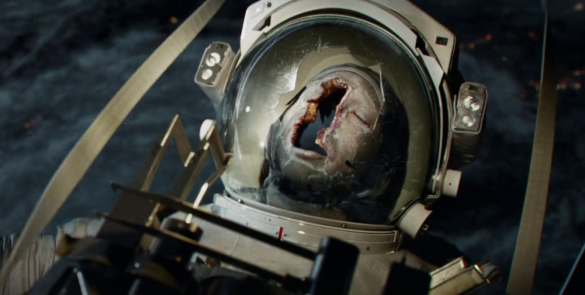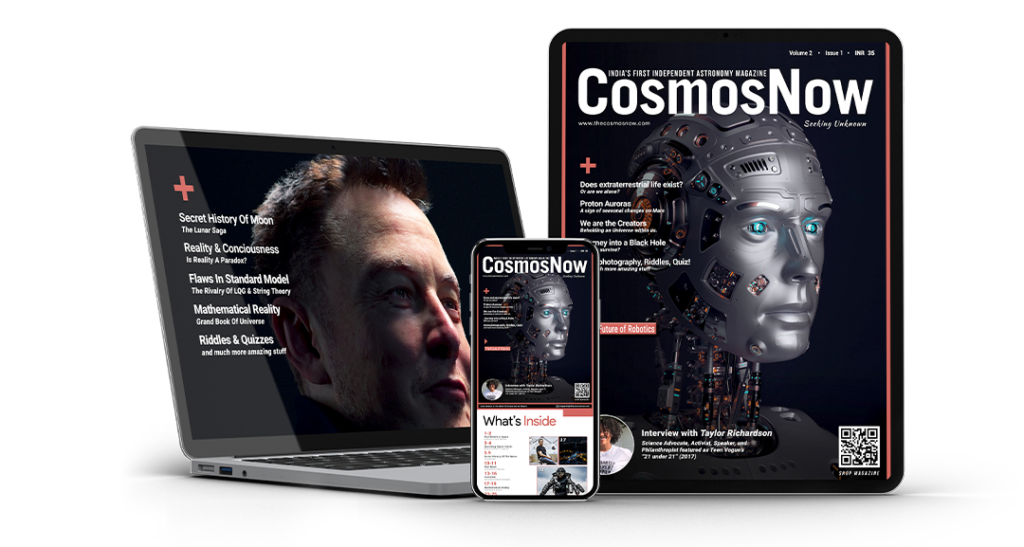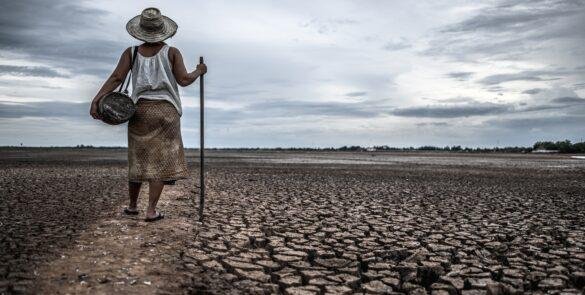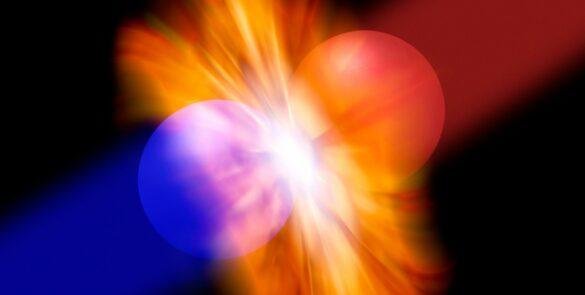Journey To The Earth’s Core | Is There A Hidden Inner World?
- Team WOS
- 8 Mins Read
WOS is supported by its audience. When you purchase through links on our site, we may earn an affiliate commission “from advertisers”, while you don’t need to pay in addition.
Today let’s go on an adventure and take a journey to the Earth’s core. Watch this video for a better understanding.
Hollow Earth Theory
There’s a very prevalent myth that the Earth is a hollow sphere, and beneath the crust, there is a whole new world full of superbeings and unimaginable phenomena. The hollow Earth theory is now completely rejected and has no basis in reality. Now we know that Earth is a solid ball of rock with an upper layer of crust, a long layer of the mantle, and at the center, a solid core. This solid core is surrounded by a liquid outer core whose movement generates an electric field and it further produces a perpendicular magnetic field that envelops the planet.
So far we have managed to study the upper layer of the crust. The deepest hole we have dug is only 12 km while Earth’s radius is 6,371 km, so we have been able to explore only a few percent of Earth but what if we could somehow reach the center of the Earth?
Is There A Hidden Inner World?
Jules Verne was a visionary novelist in 19th century France. In 1864, he wrote his most famous novel named, “Journey to the Center of the Earth”. It was the story of a German scientist who believed that it was possible to reach the center of the Earth using volcanic tubes.

In 1864, Jules Verne wrote a famous novel named, “Journey to the Center of the Earth”.
Jules Verne was following the stories that were the subject of study of ancient mythologies and philosophies. The Hollow Earth Hypothesis was suggested by none other than Edmond Halley. Yes, Halley’s Comet is named after him!
The underworld has been in the imagination for many centuries — be it a place of hell or the afterlife, or a place from which future heroes will arrive to save the world. Shambhala, Paatal Lok, and Agartha were several names given to the imagined world beneath the crust. This hollow Earth theory provided enough materials for sci-fi writers and novelists to propose different routes and stories to travel to the Earth’s core.
How To Reach Earth's Core?
In 2003, a disaster movie, “The Core” was released which showed people traveling to the Earth’s core to kickstart the movement of the liquid core and regenerate the magnetic field of the Earth. While the movie was well made, it had many discrepancies that we’ll cover in some other article.

Till now, the deepest hole we have drilled is only 12 km.
In reality, exploring the Earth’s core will not be an easy task. How to reach the core? Very simple, just Drill! Well, not so simple after all. Drilling the Earth’s surface will be a humongous task. Firstly we’ll need a suitable place where the length of the crust is very thin. The extent of the Earth’s crust varies from 80 km on the continental floor to just 5 km on the oceanic floor.
Till now, the deepest hole we have drilled is only 12 km. This gives you perspective on the mere impossibility of this giant task. The drilling will depend upon various factors such as the temperature of the layers, the hardness of the rocks, and the positions of the ridges.
Journey To The Earth's Core Begins
After selecting a potential region, seismometers can be used to map the entire region to find out the best possible route for easy drilling. Depending upon the density and composition of the different layers of the Earth, seismic waves travel at different rates, and thus it will provide us with the best possible layout for the easy way in.

The drilling will depend upon various factors such as the temperature of the layers, the hardness of the rocks, and the positions of the ridges.
Now the drilling part is the hardest one! The average drilling rate of a 12-inch diameter rotary cone drill is just 3 feet per day. Drilling at this speed will take us thousands of years to reach the core at a distance of nearly 6400 km. Let’s fast-forward for a bit, can we? After drilling through the crust, which ranges from 5-80 km, comes the mantle’s vast layer consisting of small portions of the Lithosphere, Asthenosphere, Mesosphere, and the Transition Zone. The mantle region extends up to a depth of 2900 km.
The core region of the Earth is made up of two layers — the Liquid Outer Core up to the depth of 5270 km from the surface and then a Solid Inner Core at the center. As we move from the surface to the center — temperature, density, and pressure rise.
Mantle & Outer Liquid Core
The Asthenosphere region of the Mantle and the Outer Core forms the less rigid portion. The Outer Core is a fluid layer composed mainly of iron and nickel. So this region will be comparatively easy to pass to but the temperature would be in the range of 2700-4700°C.

As we move towards the core, gravitational force decreases, and hence in the outer core, gravity will be minimum.
In the case of the mantle, the upper part is hard and hot with the temperature reaching up to 1000 degrees celsius but as soon as we reach 100 km, high pressure and temperature cause the rocks to soften and assume caramel-like features. It is this part from which the lavas come out through volcanoes. After approximately 410 km, rocks will be solid again, so again drilling will be required. As soon as the mantle ends, the outer liquid core will arrive that won’t require further drilling and we will need only propellers to move forward. Here, our propellers will have to be fireproof but soon a new problem would arise.
As we move towards the core, gravitational force decreases, and hence in the outer core, gravity will be minimum. The gravitational pull will be in the direction towards the surface, “away from the center”. To move forward, we will need pressure and a temperature-proof submarine with rocket-powered engines that can take us forward. Not a lot to ask, right?
Point Of Net Zero Gravity
As soon as our submarine crosses the liquid outer core, it will reach the solid inner core which is a giant sphere of iron and this will be the most challenging part to drill. If somehow drilled, we will reach the center point where there will be the same amount of mass all around us, pulling us equally in every direction. Welcome to the point of Net Zero Gravity!
The task is very challenging and this is the reason why we have already reached space but not inside our own planet. The mystery of what’s inside the planet has kept us wondering for a long time and science indeed gave us the answer. Earth is not hollow but solid and it will be a hell of a ride to reach the center. Modern technology is still very far to accomplish this task but maybe in the far future, some enthusiasts will take this adventure and show us what is considered to be impossible now.
So how was your trip to the Earth’s core with us? Let us know in the comments. Do follow us on Instagram for daily quality content that’ll make you fall in love with science.
Share this article
Team WOS
Share this article
Neil deGrasse TysonThe Universe is under no obligation to make sense to you.
Latest posts
We have learned many partial truths and some remain with us even when we are studying higher courses. Let’s look up such partial truths that are very common...
How do the animals and birds view the world around them? Do they perceive everything just like a human? Let's understand the basic anatomy of the eyes of...
What will the conditions be for the human body in space? How much difference a human being would feel while being in space? Space is scary and lonely, and conditions are...
Here is a list of the best science books that'll take you deep into the ocean of science. Books fueled the mighty revolutions in human history and produced...
World's most renowned scientists think that the cosmos has quantum consciousness. First of all, what exactly is consciousness? Scientists are actively engaged experimental tests of these ideas. One approach is to study brain-impaired patients to see if their information...
Trending Articles
Climate has changed in the past on its own but modern pollution has been its severe accelerator. Let’s look at some of the huge disasters that happened in the past few years due to climate change.
Big Bang nucleosynthesis created equal numbers of matter and antimatter. Antimatter is negative counterpart of matter, having the same mass but opposite...
We have learned many partial truths and some remain with us even when we are studying higher courses. Let’s look up such partial truths that are very common...
Be it a nuclear race or space race, the world became a battlefield of knowledge. Science got entangled with politics. In 1947, Bumper WAC was the first manmade object to enter space.
Blockchains can be understood simply as a transparent distributed ledger system. A ledger is a book or collection of accounts in which transactions...
Is ISRO The Best Space Agency? ISRO's incredible journey is the story of India’s jump to orbit! In 1962, APJ Abdul Kalam was selected for the job of rocket engineer at the Indian Committee for Space Research (INCOSPAR)...












